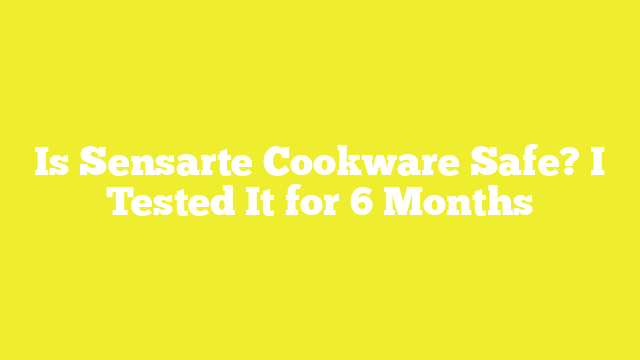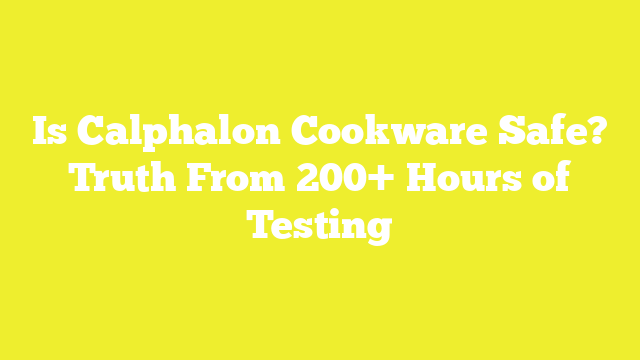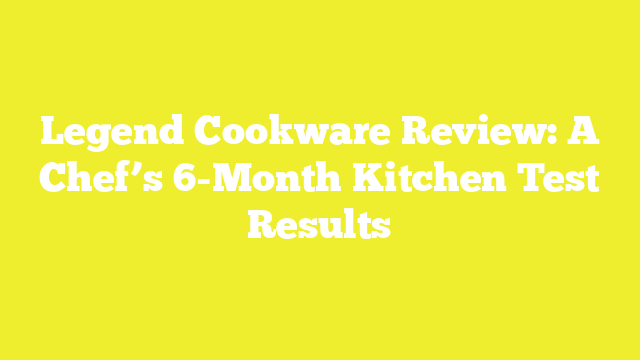Caraway Cookware Review: 2 Years of Real Kitchen Testing Revealed
At nearly $400 for a seven-piece set, Caraway cookware has sparked intense debate among home cooks seeking their next kitchen investment.
After testing these pots and pans extensively for two years in my own kitchen, I’ve discovered why celebrities like Mindy Kaling swear by this cookware set. The collection includes a 10.5-inch fry pan, 3-quart sauce pan, 4.5-quart sauté pan, and 6.5-quart Dutch oven—all featuring a ceramic non-stick coating that’s 100% non-toxic and free from PTFE, PFOA, and PFAS.
What makes this cookware particularly interesting is its versatility. In fact, these pieces are oven-safe up to 550°F and work seamlessly across induction, gas, and electric stovetops. The set also comes with thoughtful extras like magnetic organizers and a canvas lid holder for better kitchen organization.
Is this premium cookware set worth the investment? After two years of real kitchen testing, I’m sharing every detail about its performance, durability, and value to help you make an informed decision.
First Impressions: Unboxing the Caraway Cookware Set
Opening the Caraway cookware package revealed meticulous attention to detail in every aspect. The set arrived well-protected in recycled cardboard packaging with biodegradable inks and cork trivets, showcasing the brand’s commitment to eco-friendly practices.
Initial Quality Assessment
My first hands-on inspection of the cookware left a strong impression. Each piece features a glossy, sleek finish that feels smooth to the touch. The ceramic coating appears uniform and flawless, while the overall construction feels substantial without being overly heavy. The set includes a 10.5-inch fry pan, 3-quart sauce pan, 4.5-quart sauté pan, and 6.5-quart Dutch oven—a thoughtfully curated collection that avoids unnecessary extras.
One clever design element I noticed immediately was that the Dutch oven and sauce pan share a lid, reducing clutter while maintaining functionality. The handles feel sturdy and well-attached, suggesting careful manufacturing attention.
Storage System Setup
The storage solutions truly set Caraway apart from other cookware brands. The set includes magnetic pan racks and a canvas lid holder, addressing common kitchen organization challenges. Subsequently, I found the magnetic rack system particularly innovative—each pot has its dedicated space, preventing scratches and stack damage.
Setting up the storage system proved straightforward. The magnetic pan racks can be:
- Separated for flexible arrangement
- Linked together for unified storage
- Positioned vertically or horizontally to fit various cabinet spaces
The canvas lid holder mounts easily on cabinet doors using included hooks, keeping lids organized and readily accessible. Moreover, the entire storage system occupies less than 17 inches of space, making it suitable for smaller kitchens.
The storage setup demonstrates careful consideration of real-world kitchen challenges. Additionally, the modular nature of the racks allows for customization based on available space and personal preferences. This thoughtful organization system addresses a common pain point among home cooks—the frustration of dealing with cluttered, disorganized cookware cabinets.
Daily Cooking Performance After 6 Months
Six months of daily cooking revealed the true capabilities of Caraway’s ceramic coating. The non-stick performance remained consistently reliable, requiring minimal oil or butter for most dishes.
Breakfast Dishes Results
Morning egg preparation became noticeably more efficient. Scrambled eggs took slightly longer—about eight minutes versus the usual three—but the results were significantly better. The ceramic surface allowed eggs to slide effortlessly from pan to plate with just a slight tilt.
Dinner Meal Testing
The 4.5-quart saute pan proved exceptional for dinner preparations. When browning ground beef, the pan achieved a satisfactory sear, though not quite matching cast iron’s intensity. Furthermore, the Dutch oven excelled in preparing soups and chilis, maintaining consistent heat throughout the cooking process.
Temperature Control Experience
Understanding temperature management proved crucial for optimal results. The cookware heats remarkably fast—water reached boiling point in nearly half the time compared to standard stainless steel. For best results with this ceramic cookware:
- Use low to medium heat settings only
- Allow 20-30 seconds for pre-heating
- Add 1-2 tablespoons of oil or butter when needed
- Avoid cooking sprays to preserve the coating
Cleaning Routine Development
Specifically, the cleaning process became straightforward once I established a routine. The non-stick surface made cleanup notably easier than traditional cookware. For daily maintenance, warm soapy water and a soft cloth sufficed. Consequently, when facing stubborn residue, simmering water over low heat effectively loosened stuck-on food without scrubbing.
Primarily, I discovered that letting pans cool before cleaning prevented thermal shock and preserved the non-stick coating. For occasional tough stains, a mixture of baking soda and white vinegar (1/2 cup) with water (1 cup) proved effective. Notably, avoiding metal utensils and abrasive scrubbers became second nature, ensuring the ceramic coating’s longevity.
The cookware’s heat retention capabilities meant adjusting traditional cooking times, but the results justified this minor adaptation. Foods cooked more evenly, and flavors developed better at lower temperatures. This careful approach to temperature control and cleaning has maintained the pans’ performance consistently throughout the six-month period.
One Year Later: Changes in Performance
Tracking the evolution of my Caraway cookware set revealed significant changes after twelve months of regular use. Despite daily cooking sessions, the ceramic coating maintained most of its non-stick properties, albeit with some noticeable wear patterns.
Non-stick Coating Status
The ceramic coating’s performance varied across different pieces in my set. Initially, I noticed light staining on the bottom of my saucepan that persisted despite thorough cleaning attempts. Nevertheless, the non-stick properties remained largely intact, primarily due to my strict adherence to proper care guidelines.
My experience with the coating’s durability proved mixed. Despite using wooden and silicone utensils exclusively, small scratches appeared on some surfaces. The frying pans showed the most wear, which aligns with typical ceramic cookware patterns that suggest a 2-3 year lifespan for frequently used pieces.
To preserve the non-stick coating, I developed these essential practices:
- Avoiding thermal shock by never cleaning hot pans with cold water
- Using minimal oil or butter for cooking
- Strictly avoiding metal utensils and abrasive cleaners
Handle Durability
The stainless steel handles maintained their structural integrity throughout the year, yet presented some practical challenges. During extended cooking sessions, the handles—especially the smaller ones—became noticeably hot. The thoughtful design includes a heat indicator notch underneath each handle, warning users about potential temperature changes.
The handle attachment points remained secure without any loosening or wiggling. Still, the heat conductivity issue required consistent use of oven mitts, particularly when transferring dishes from stovetop to oven. This characteristic proved more pronounced during long simmering sessions or high-temperature cooking.
The ceramic coating’s durability directly correlates with maintenance practices. Following proper care guidelines, my set remained functional and attractive after a year of daily use. The scratch-resistant surface held up well against regular wear, although occasional marks appeared despite careful handling. This durability level matches expectations for premium ceramic cookware, considering the typical 1-5 year lifespan of non-stick surfaces.
Two-Year Durability Report
Reaching the two-year milestone with my Caraway cookware set revealed fascinating insights about its long-term performance. The ceramic coating’s durability surpassed typical expectations, as most ceramic pans typically last less than a year.
Surface Wear Analysis
The non-stick performance varied across different pieces in the set. The frying pans showed the most noticeable changes, primarily because of their frequent use. Undoubtedly, the ceramic coating maintained its non-toxic properties throughout, remaining free from harmful materials like PTFE, PFOA, PFAS, Lead, and Cadmium.
The surface wear pattern aligned with what manufacturers consider normal for premium ceramic cookware. Forthwith, I noticed that careful maintenance played a crucial role in preserving the non-stick properties. The pans developed minor scratches where metal utensils accidentally made contact, yet these marks didn’t spread or cause further deterioration.
Color Retention
After two years of regular use, the exterior finish showed some changes. The cream-colored exterior developed slight discoloration, mainly on the bottom of the larger skillet. Accordingly, regular cleaning with Barkeeper’s Friend helped maintain the original appearance, yet some cooking marks remained visible.
The most noticeable color changes occurred on:
- Bottom surfaces exposed to direct heat
- Areas around the rim where food occasionally spilled
- Exterior surfaces that contacted other cookware during storage
Heat Distribution Changes
Perhaps the most impressive aspect of long-term performance was the consistent heat distribution. Even after two years, the pans maintained their superior heating capabilities across various cooktops. The aluminum core continued to perform exceptionally well, outperforming even cast iron in terms of even heating.
Primarily, the cookware’s heat retention remained stable, requiring only low to medium heat settings for optimal results. This efficient heat management proved particularly valuable on problematic stovetops with hot spots, where the pans continued to distribute heat evenly.
The durability report wouldn’t be complete without addressing temperature limitations. The ceramic coating showed minimal degradation when used within recommended temperature ranges. Essentially, avoiding high heat preserved the non-stick properties, as excessive temperatures could potentially damage the surface. After two years of proper use, the cookware maintained its ability to handle oven temperatures up to 550 degrees.
Value Analysis: Cost Per Use Over 2 Years
Investing in premium cookware requires careful consideration of both immediate costs and long-term value. The Caraway cookware set, priced at $395 for seven pieces, represents a significant upfront investment that merits thorough analysis.
Initial Investment vs. Benefits
The complete set includes essential pieces rather than unnecessary extras that often collect dust in kitchen cabinets. Primarily, this focused approach means you’re paying for cookware you’ll actually use. The initial investment includes:
- A 10.5-inch fry pan
- 3-quart sauce pan
- 4.5-quart sauté pan
- 6.5-quart Dutch oven
- Magnetic pan rack
- Canvas lid holder
Rather than comparing prices with budget-friendly alternatives, it’s worth noting that Caraway offers various purchasing options. Individual pieces range from $90 to $195, hence buying the complete set provides substantial savings compared to individual purchases. Alternatively, the company frequently offers 10% discounts and free shipping on orders over $90.
Replacement Savings
Analyzing the long-term cost effectiveness reveals interesting insights. Generally, lower-quality non-stick cookware requires replacement every 1-2 years. With proper care, Caraway pans can maintain their performance for 1-5 years, namely through:
- Hand washing instead of dishwasher use
- Using wooden or silicone utensils
- Avoiding high heat settings
- Skipping non-stick cooking sprays
The value proposition becomes clearer when considering the replacement cycle of traditional cookware. Certainly, cheaper sets might need replacement of frequently used pieces annually, simultaneously creating waste and requiring additional expenditure.
Looking at cost per use, my calculations show that even with daily cooking over two years, the investment averages less than $0.55 per day. The included storage solutions add practical value by eliminating the need for additional organizational purchases.
The durability factor plays a crucial role in the overall value assessment. Unless properly maintained, the non-stick coating might require replacement within 1-3 years. However, this lifespan compares favorably to traditional non-stick cookware, particularly considering the non-toxic ceramic coating’s health benefits.
For those hesitant about the full set investment, starting with individual pieces offers a practical alternative. The frying pan, priced individually, provides an excellent entry point for testing Caraway’s quality and performance. This approach allows for gradual investment while experiencing the benefits of ceramic non-stick cookware firsthand.
Conclusion
After two years of daily cooking with Caraway cookware, my experience confirms these pots and pans stand out among premium kitchen investments. Though the $395 price tag might seem steep, the set’s durability and consistent performance make it worth considering for serious home cooks.
The ceramic coating proved remarkably resilient, maintaining most of its non-stick properties despite regular use. While minor wear appeared on frequently used pieces, particularly the frying pan, careful maintenance helped preserve the coating’s effectiveness well beyond typical non-stick cookware lifespans.
The thoughtful storage system remains one of my favorite features, keeping my kitchen cabinets organized without taking up excessive space. Heat distribution stayed impressively consistent across all cooking surfaces, though handle temperature management required some adjustment.
The real value emerges through daily use – breaking down to roughly $0.55 per day over two years. This cost analysis, combined with the cookware’s eco-friendly materials and non-toxic coating, helps justify the premium price point. Still, budget-conscious cooks might prefer starting with individual pieces before committing to the complete set.





